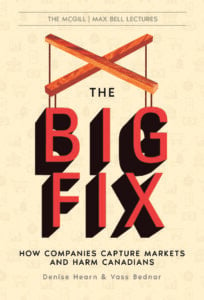“Everything companies”: How Amazon’s playbook is reshaping competition in Canada
This way of thinking about a company’s value isn’t necessarily new. Ray Kroc, the founder of McDonald’s, is said to have once asked a group of MBA students to tell him what business they thought he was in. They volunteered that he was in the hamburger business. He countered that, “My business is real estate.” Similarly, Baker describes HBC primarily as “an investment company at the crossroads of real estate, operating companies and digital companies.”
Canadian Tire: Much more than a retailer
Similarly, Canadian Tire is typically thought of as a retailer, but its ecosystem is more complex than most people may appreciate, as their suite of assets extends beyond their most recognisable store. Over time, the firm’s acquisitions of Mark’s (formerly Mark’s Work Wearhouse), Party City, the Helly Hansen apparel brand, and SportChek have allowed the firm to combine assets in retail, automotive and gasoline, financial services and specialty brands, enhancing the firm’s retail footprint and strengthening its market position across multiple sectors.
The company is also known for its paper Canadian Tire money, first introduced in 1958, an early cash rewards loyalty program. Using its own pseudo-currency made the store feel like a board game come to life and was extremely popular. Today, Canadian Tire money is digital, and the Canadian Tire Bank has been licensed under the Banking Act since 2003. Canadian Tire Financial Services is a subsidiary of the company and now offers credit cards, insurance products, and other financial services. So, is Canadian Tire a bank, an insurer, or a retailer? It’s all of the above. And this plays a significant role in driving loyalty, measured by the frequency and amount that the consumer spends through their Triangle Rewards program, which replaced Canadian Tire Money in 2018.
Investors can even invest in Canadian Tire’s collection of real estate holdings through a REIT (real estate investment trust) through the Toronto Stock Exchange. The REIT owns the buildings and land that Canadian Tire (and other of its retail brands) lease from them. The contracts stipulate that the REIT is entitled to annual rent increases.
The collection of these assets and subsidiaries creates a mutually reinforcing flywheel for the business. It also complicates the definition of Canadian Tire’s relevant marketplace. How should an analyst account for the gas stations and convenience stores owned by Canadian Tire Petroleum, where people collect points and other incentives through Triangle Rewards? Or PartSource, the specialty automotive parts retailer owned by Canadian Tire? The same question is raised with Mark’s (clothing and footwear), SportChek (sports apparel), Helly Hansen (outdoor apparel) or Party City (party supplies). The more diverse holdings a company has, the more difficult it can be to value the company.
Overly simplistic calls for more competition miss this critical point and simplify an increasingly complex set of economic questions. More and more companies are moving from competing within industries to competing to accumulate vast ecosystems of assets. Trying to put companies into neatly defined buckets or industries misses the point. Commerce is a complex web of relationships among many different stakeholders. Just when you think you’ve wrapped your mind around it, a company can shape-shift and confound a rigid sectoral definition.
Companies increasingly want to insert themselves into every aspect of our daily lives, enveloping us in their ecosystem. As we go about our daily lives, everything we do becomes a cash-out opportunity, and we transfer a bit of our paycheque to a monopolist or oligopolist. Industries, be gone. We are the asset.

Excerpted from The Big Fix: How Companies Capture Markets and Harm Canadians by Denise Hearn and Vass Bednar. Copyright 2024. Reprinted by permission of Sutherland House Books.